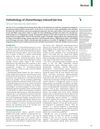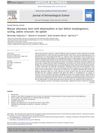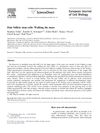S100A8 Induces Cyclophosphamide-Induced Alopecia via NCF2/NOX2-Mediated Ferroptosis
February 2025
in “
Free Radical Biology and Medicine
”
TLDR Blocking S100A8 can reduce chemotherapy-induced hair loss.
This study investigates the role of S100A8 in chemotherapy-induced alopecia (CIA) through ferroptosis, a form of cell death, in a cyclophosphamide (CYP)-induced mouse model. Elevated levels of S100A8 were found to promote ferroptosis in outer root sheath keratinocytes (ORSKs) via the NCF2/NOX2 signaling pathway, contributing to hair follicle damage. The use of paquinimod (PAQ), an S100A8 inhibitor, reduced alopecia and markers of oxidative stress and ferroptosis. These findings suggest that targeting the S100A8–NCF2/NOX2 axis could be a promising therapeutic strategy for mitigating CIA, offering new insights into the molecular mechanisms of hair loss during chemotherapy.










